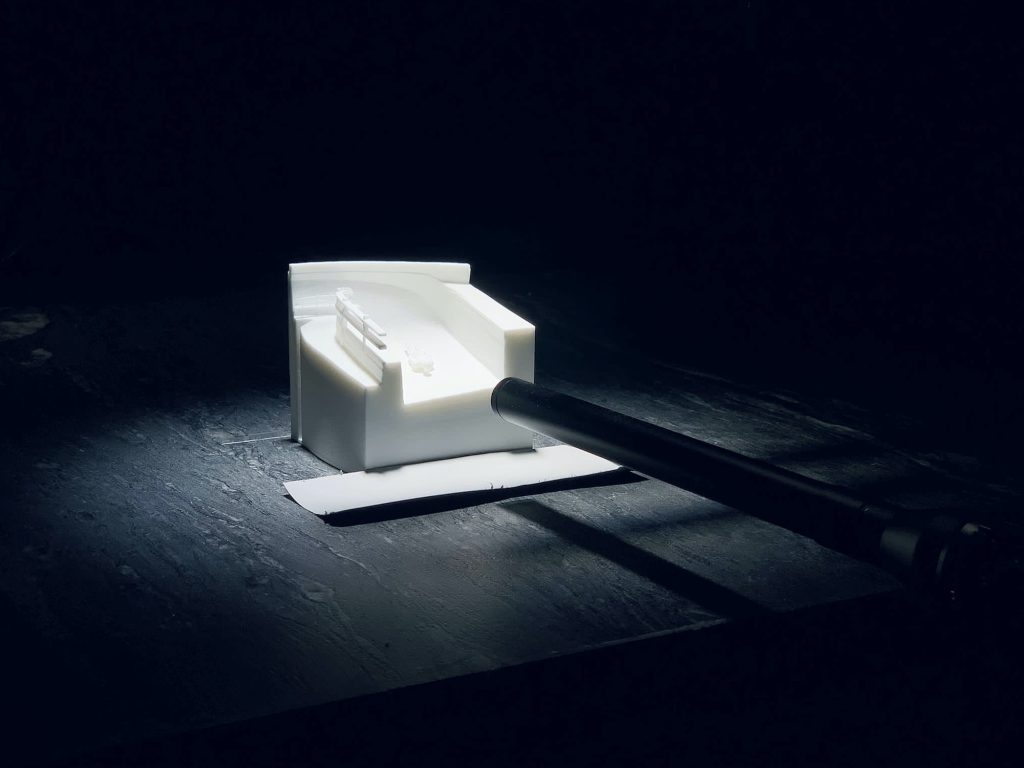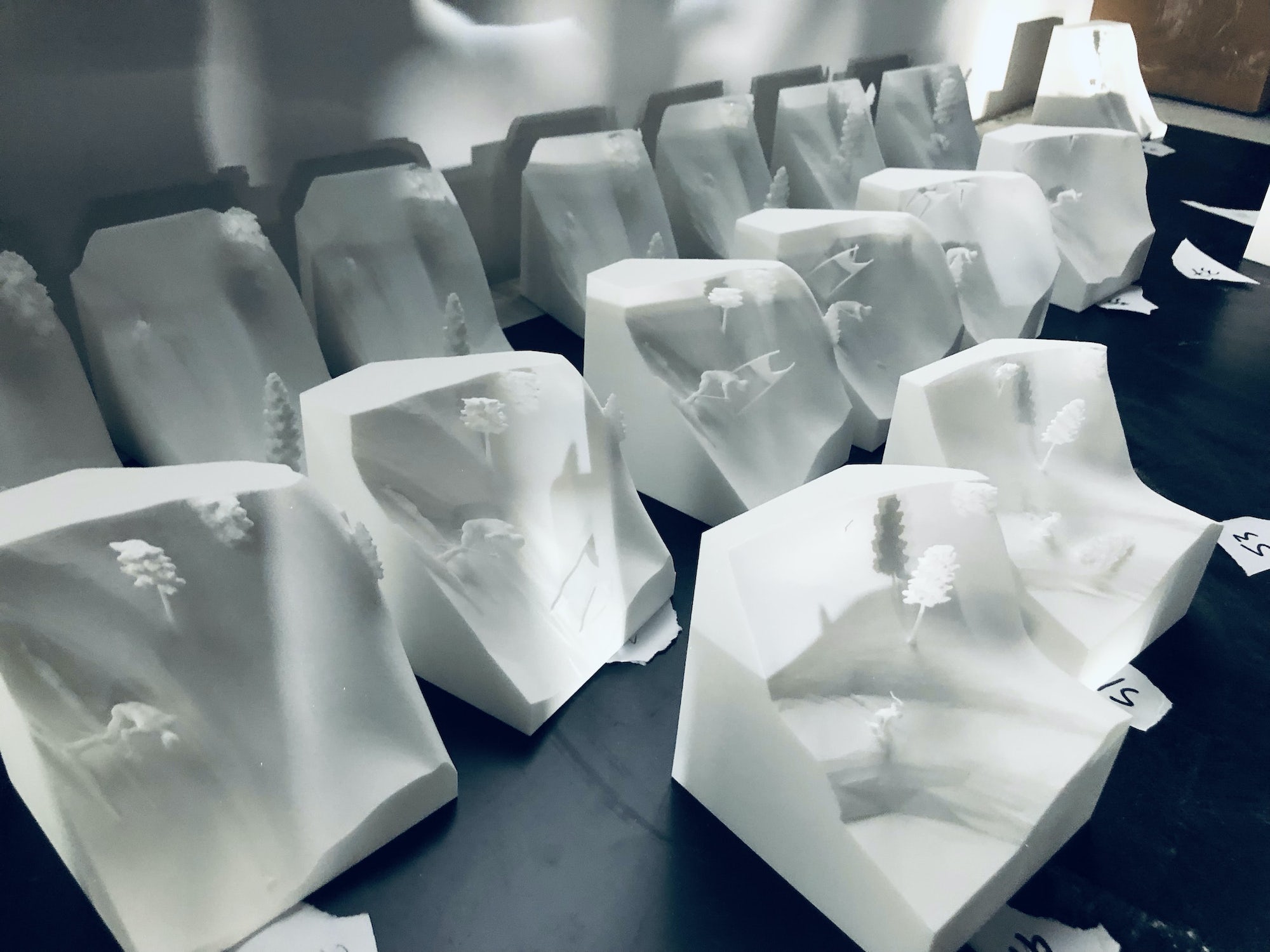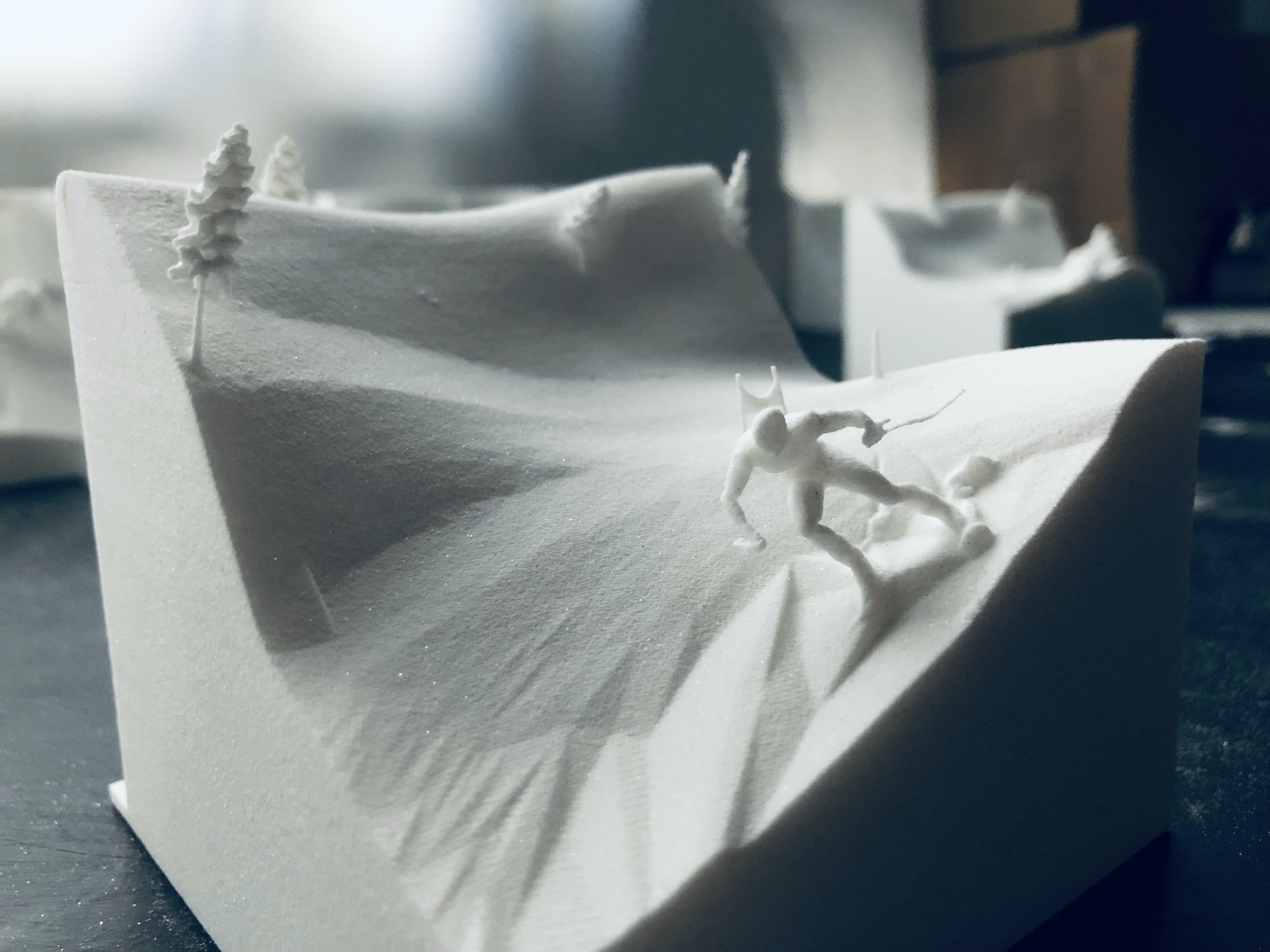Insiders and analysts predict the 3D printing trends to watch in our latest series of articles focused on the future of 3D printing.
With the 2022 Winter Olympics just around the corner, the BBC (British Broadcast Corporation) has aired its first advert for the upcoming sporting event – and it features 3D printing.
Named ‘Extreme by Nature’, the 40-second-long trailer is an imaginative mixed-media film. It combines stop-motion animation, entirely 3D printed frames, and a dash of in-camera effects to capture the intensity of the Winter Olympics. The ad was developed by BBC Creative, the BBC’s own in-house agency, and directed by Balázs Simon through Blinkink, an animation production company.
The 2022 Winter Olympics will take place in Beijing, China, from Feb 4 – 20 with a total of 15 sports.
“I really admire people having the will to push things to the limits,” Simon told Creative Review. “What could be a better example for that than the Olympics? Especially the Winter Games where they compete in environments that are so different from our usual experiences. When I got approached for this project, the biggest question for me was how to portray and live up to that dedication. We wanted to portray them being born into ice and snow and eventually breaking out.”
Extreme by Nature
Extreme by Nature aims to portray speed and excitement without the use of any moving parts. All of the still frames used in the ad are also 3D printed from a polymer material, meaning there’s no real ice or snow at any point.
The animation begins with a basic ice cube in the middle of the shot. The ice cube slowly cracks, frame-by-frame, to reveal a speed skater who then morphs into a slider, a skier, a snowboarder, and eventually a figure skater. Finally, the ad culminates in a sequence of ‘ice sculptures’ depicting the various sports that are set to feature at the games.
Simon described the creation of the film as a huge challenge, especially when it came to the camerawork for the 3D printed snow scenes. To get the viewer to feel like the motion was actually real, the team leveraged a mix of printed action and camera movements.
He explains, “We started to think about cameras differently: some of their motion would be directly ‘printed’, and some would be actual movement of the control rig.”
Building hype for the Winter Olympics
The debut ad was first aired on 22 January during Michael McIntyre’s The Wheel on BBC One. Going forward, the animation will be the BBC’s title sequence for the Winter Olympics and run during ad breaks across the various BBC channels.
Interestingly, Extreme by Nature doesn’t mention China at all, despite it being the host country.

Additive manufacturing also made several appearances at the Tokyo Olympics, which ran from 23 July – 8 August 2021. Automotive manufacturer Hyundai Motor Group 3D printed a set of bow grips for the Korean archery team, helping them take home gold in the men’s, women’s, and mixed team categories at this year’s games.
Aluminum specialist Fehrmann Alloys also 3D printed a rudder blade suspension that helped propel the Australian sailing team to victory. The part was manufactured using Fehrmann’s high-performance AlMgty alloy at the request of Hamburg-based boatyard Ziegelmayer, a leading manufacturer of Olympic sailboats in the 470 class.
Subscribe to the 3D Printing Industry newsletter for the latest news in additive manufacturing. You can also stay connected by following us on Twitter, liking us on Facebook, and tuning into the 3D Printing Industry YouTube Channel.
Looking for a career in additive manufacturing? Visit 3D Printing Jobs for a selection of roles in the industry.
Featured image shows a 3D printed frame in the ad. Photo via BBC.





